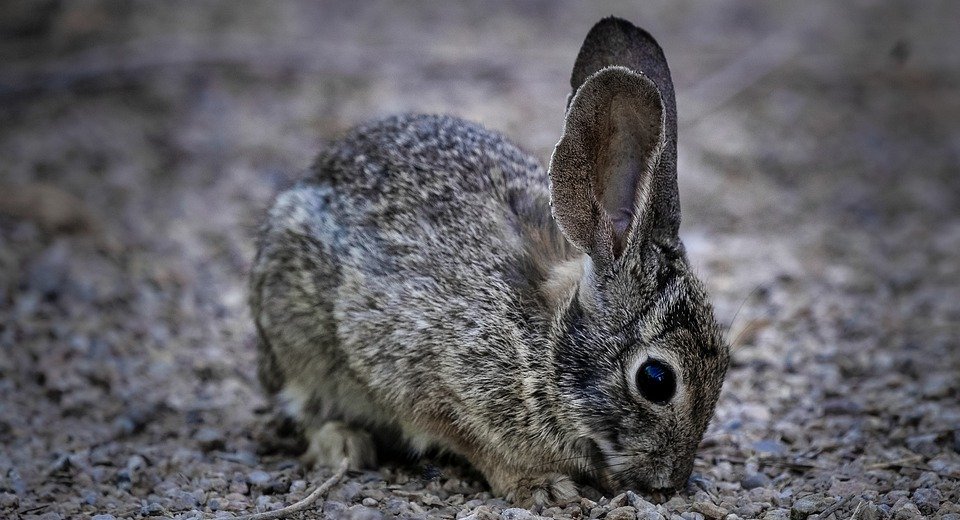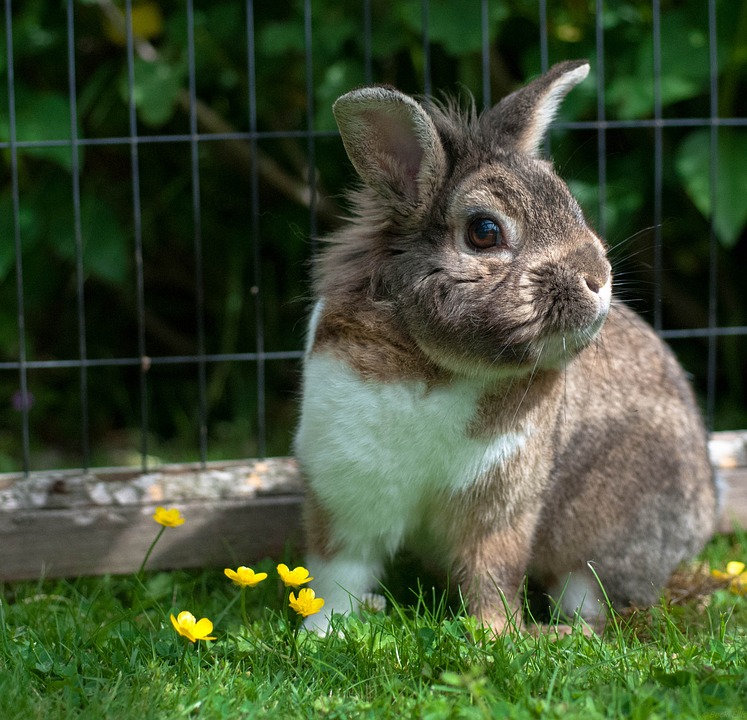Rabbits are known for their gentle nature and fluffy charm, but did you know they also have a surprising vocal repertoire? Beyond their adorable appearance, these furry creatures communicate through a variety of sounds, each conveying unique messages. Understanding these sounds is like unlocking a secret language, revealing your rabbit's emotions, needs, and even health status. This comprehensive guide will delve into the world of rabbit noises, exploring their meanings and implications in detail.
Part 1: The Fundamentals of Rabbit Communication

1.1 Beyond the Silent Image: Rabbit Vocalizations and Body Language
- Contrary to popular belief, rabbits are not completely silent creatures. They use a combination of sounds and body language to communicate their emotions and intentions.
- While not as diverse as human language, rabbit vocalizations are remarkably effective in conveying important messages within their social groups and with humans.
- By paying close attention to both their sounds and body language, you can gain valuable insights into their well-being and foster a deeper bond.
1.2 The Importance of Context: Deciphering the Meaning
- Understanding the context in which a particular sound is made is crucial for interpreting its meaning.
- The same sound can have different interpretations depending on the rabbit's environment, social interactions, and overall mood.
- Observing other body language cues, such as ear position, tail movements, and facial expressions, will provide further clues.
Part 2: Unveiling the Rabbit's Vocal Repertoire

2.1 The Grumble: A Sound of Contentment and Relaxation
- A low, rumbling sound, often described as a "purr," emitted by rabbits when they are relaxed, content, and feeling safe.
- This sound is usually accompanied by a relaxed posture, slow breathing, and possibly chewing or grooming.
- You are likely to hear this sound when your rabbit is enjoying a cozy nap, cuddling in their favourite spot, or simply basking in the warmth of their surroundings.
2.2 The Thump: A Powerful Warning and Expression of Emotions
- A loud, distinct thump produced by the rabbit's hind legs, often described as a "foot-stomp." This sound serves as a powerful communication tool.
- It can indicate a range of emotions, including fear, warning, excitement, or even territoriality.
- In some situations, it can be a way to communicate with other rabbits, warning them of potential danger or asserting dominance.
- For example, a thump might be used to signal the presence of a predator, warn off other rabbits approaching their territory, or express excitement during playtime.
2.3 The Growl: A Sign of Threat and Defense
- A low, guttural growl that signifies discomfort, anxiety, or threat. It is a clear indication that the rabbit is feeling uneasy and potentially ready to defend itself.
- A growl might be accompanied by other signs of aggression, such as flattened ears, raised fur, a lowered body posture, and teeth grinding.
- It's important to respect these warning signs and avoid approaching a growling rabbit, as they may become defensive and even bite.
2.4 The Scream: A Cry of Pain and Distress
- A high-pitched, piercing scream that signals intense pain, distress, or fear. It's a clear sign that something is wrong and requires immediate attention.
- This sound is typically associated with severe discomfort, such as a sudden injury, illness, or an overwhelming sense of fear.
- If you hear your rabbit scream, it's crucial to investigate the situation and provide immediate care or seek veterinary advice.
Part 3: Deciphering the Subtleties of Rabbit Sounds
3.1 The Snort: A Sound of Playfulness and Excitement
- A loud, sharp snort, often accompanied by a quick jerk of the head. It is usually associated with playful interactions and excitement.
- Think of it as a "yippee!" or a "let's play!" sound that rabbits use to express their enthusiasm for games or social interactions with other rabbits.
- You may hear this sound during play sessions, when they are chasing toys, or during social grooming with their companions.
3.2 The Tooth Grinding: A Mix of Contentment and Discomfort
- A rhythmic clicking sound produced by the rabbit's teeth. It can indicate a range of emotions, depending on the context and other body language cues.
- In a relaxed and comfortable setting, tooth grinding can be a sign of contentment or even a way of expressing happiness.
- However, if the grinding is excessive, accompanied by other signs of distress, or occurs frequently, it could indicate pain or discomfort.
- If you notice frequent or excessive tooth grinding, it's essential to consult with a veterinarian to rule out any underlying dental issues.
3.3 The Grunt: Expressing Annoyance, Frustration, or Warning
- A low, guttural grunt that often signifies annoyance, frustration, or discomfort. It can also be used as a warning to other rabbits or even humans.
- This sound might be emitted when a rabbit feels confined, is being bothered, or is trying to assert its dominance in a social interaction.
- For example, a rabbit might grunt if they are trying to get away from you, if they feel their space is being invaded, or if they are trying to discourage another rabbit from entering their territory.
3.4 The Whimper: A Plea for Attention, Comfort, or Help
- A soft, whimpering sound that can indicate pain, fear, or loneliness. It is essentially a plea for attention, comfort, or assistance.
- Rabbits might whimper if they are feeling unwell, if they are scared of something, or if they are seeking reassurance from their human companion.
- If your rabbit is whimpering, it's important to investigate the cause and provide appropriate care or reassurance.
3.5 The Click: A Subtle Communication Tool for Social Interactions
- A quick, sharp click that is often used to communicate with other rabbits, particularly in social settings. It can express a range of emotions, including warning, dominance, or displeasure.
- This sound might be used to establish dominance in a social hierarchy, warn other rabbits away from a particular area, or express dissatisfaction with a certain behaviour.
- For example, a rabbit might click to signal another rabbit to back off, to stop a particular behaviour, or to assert its dominance within a group.
Part 4: Understanding Rabbit Sounds in Different Contexts
4.1 Social Interactions: Communication within the Rabbit Colony
- Rabbits use a combination of sounds and body language to interact with each other within their social groups.
- Thumping, growling, and clicking are common sounds used during territorial disputes or to establish dominance within a rabbit colony.
- Snorting and chirping are often associated with playful interactions, bonding rituals, and expressing affection among rabbits.
4.2 Human Interactions: Building a Bond Through Communication
- Rabbits can learn to associate certain sounds with specific actions or events, such as being fed or receiving attention.
- They might use soft grunts, chirps, or even a gentle "thump" to communicate their needs or desires to their human companions.
- Responding to these sounds and understanding their body language helps build a strong bond between a rabbit and its human caregiver.
4.3 Recognizing Pain and Distress: When to Seek Veterinary Attention
- High-pitched screams, whimpers, excessive tooth grinding, and lethargy are all signs of pain or distress in rabbits.
- A rabbit in pain might also show signs of loss of appetite, trembling, or changes in their usual behaviour.
- If you notice any of these symptoms, it's crucial to seek veterinary attention immediately to diagnose and treat any underlying health issues.
Part 5: Addressing Common Questions About Rabbit Sounds
5.1 Do Rabbits Cry?
- While rabbits don't cry in the same way humans do, they can produce whimpers, soft sobs, or even a high-pitched squeak when in pain or distress.
- These sounds indicate discomfort and require attention, as they might signal an underlying medical issue or a need for comfort and reassurance.
5.2 What Does a Rabbit's Thump Mean?
- A thump can indicate a range of emotions, including fear, excitement, warning, or territorial behaviour.
- It's crucial to consider the context and observe other body language cues to understand the specific meaning behind a thump.
5.3 Why Do Rabbits Grind Their Teeth?
- Rabbits grind their teeth for various reasons, including contentment, relaxation, or as a sign of pain or discomfort.
- If the grinding is excessive or accompanied by other signs of distress, it's essential to consult with a veterinarian to rule out any dental issues.
5.4 How Can I Stop My Rabbit from Thumping?
- Thumping is a natural behaviour and cannot always be stopped. However, creating a safe and secure environment can help reduce anxiety and minimize thumping.
- Providing plenty of space, enrichment toys, and a consistent routine can help your rabbit feel secure and less likely to thump.
5.5 Are Rabbit Sounds Always a Sign of Distress?
- Not all rabbit sounds indicate distress. Many sounds are part of their natural communication and can be positive or playful.
- Observing your rabbit's overall behaviour and body language will help you decipher the meaning behind their sounds.
5.6 Can I Teach My Rabbit to Respond to My Voice?
- Yes, rabbits can learn to associate certain sounds with specific actions, such as being fed or receiving attention.
- Using a calm, gentle voice, positive reinforcement, and consistent interaction can help build a strong communication bond between you and your rabbit.
5.7 Is It Normal for My Rabbit to Make a Clicking Sound?
- Clicking is a common sound made by rabbits and can have different meanings, depending on the context and the rabbit's body language.
- It can be a way of communicating with other rabbits, warning others, or expressing displeasure. Understanding the context is crucial for interpreting the meaning behind a clicking sound.
Everyone is watching
-

Do Rabbits Lay Eggs? (The Surprising Truth)
OTHER TYPES OF PETSThis article will unravel the common misconception that rabbits lay eggs, exploring the fascinating world of r...
-

What's a Group of Rabbits Called? (A Comprehensive Guide)
OTHER TYPES OF PETSThis article delves into the fascinating world of rabbits, exploring the various terms used to describe a grou...
-

Can Rabbits Eat Grapes? A Guide to Safe Rabbit Treats
OTHER TYPES OF PETSThis comprehensive guide will explore the safety and suitability of grapes for rabbits, providing detailed inf...
-

Predators That Hunt Rabbits: A Guide to Natural Enemies
OTHER TYPES OF PETSI've always been fascinated by the circle of life, that delicate dance between predator and prey. Growing up ...
-

Are Rabbits Nocturnal Animals?
OTHER TYPES OF PETSThe question of whether rabbits are nocturnal animals is a fascinating one, with a surprisingly complex answer...
